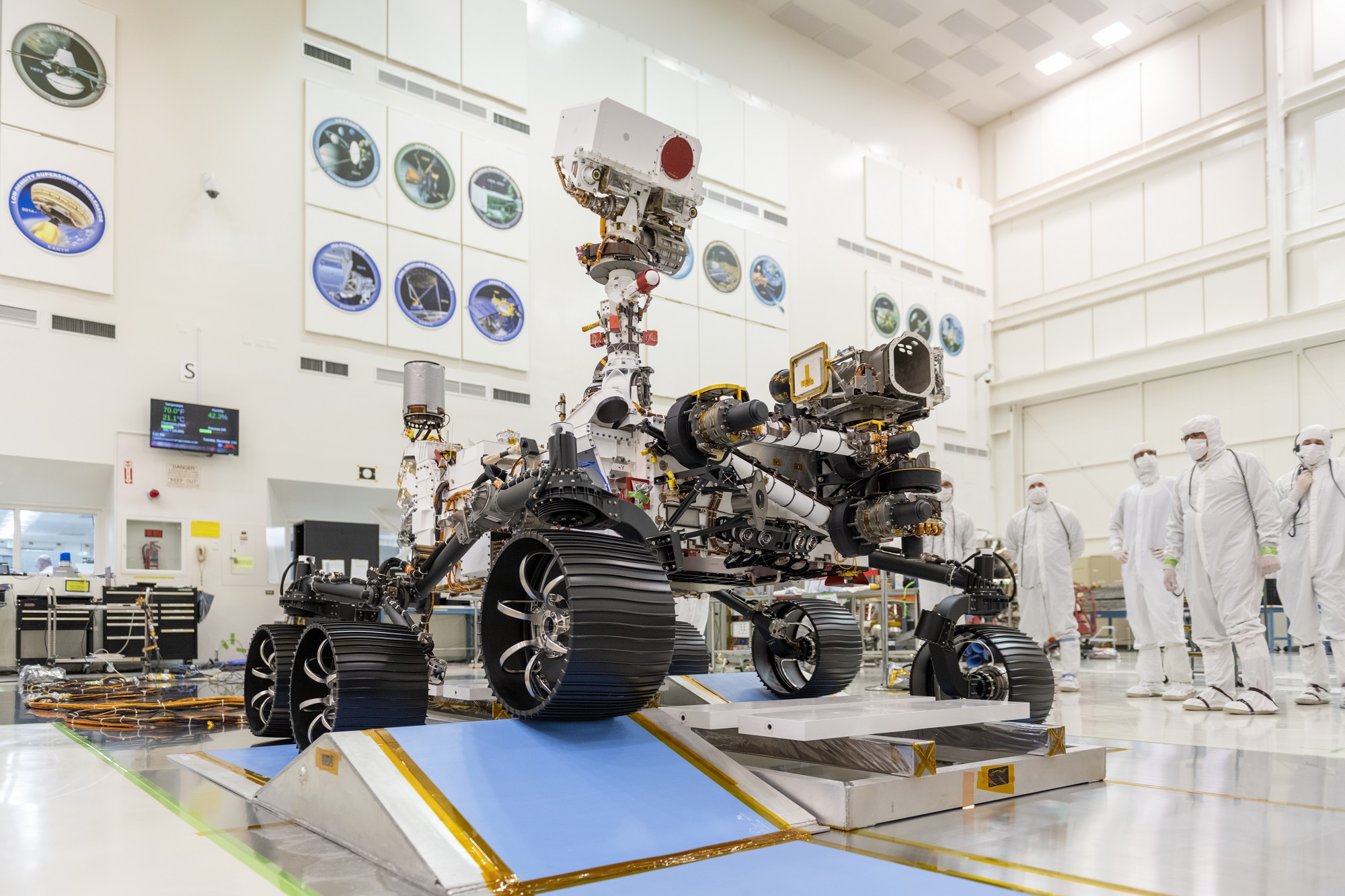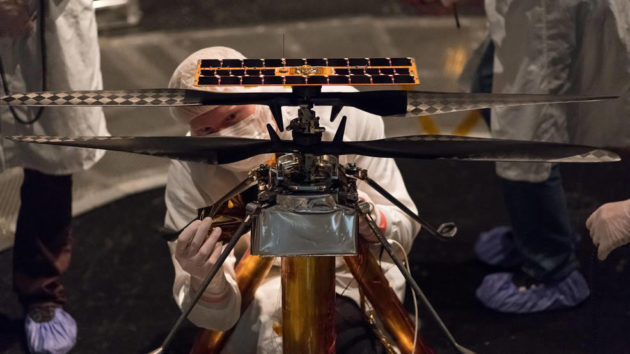The Perseverance rover will head to the Red Planet this summer.

NASA / JPL
NASA announced today that its next Mars Rover mission now has a formal name: Perseverance.
The final selection comes after a contest launched in 2019 that saw kindergarten through 12th-grade students across the United States submit 28,000 essays supporting their choice of name. Nearly 4,700 volunteers judged the essays and then winnowed the field down to 155 semifinalists. The nine finalist names included Tenacity, Endurance, and Ingenuity. NASA sought public opinion on the final choice via an online poll.
The selected name comes from an essay by seventh-grader Alexander Mather from Lake Braddock Secondary School in Burke, Virginia. The name evokes a key element integral to space exploration.
"Alex's entry captured the spirit of exploration," said Thomas Zurbuchen (NASA Science Mission Directorate) in a recent press release. "Like every exploration mission before, our rover is going to face challenges, and it's going to make some amazing discoveries."
Mars Perseverance is now set to launch on an Atlas V rocket from Cape Canaveral Air Force Station in Florida on July 17th, with a launch window running up through August 5th. Mather and his family will attend the launch.
Perseverance will take about seven months to transit to the Red Planet, landing at Jezero Crater on February 18, 2021. Jezero was selected because it shows signs of hosting a deep lake 3.7 billion years ago. The area also shows the remains of a river delta, another good spot to hunt for bio-signatures.
Like the Curiosity rover, which arrived at Mars in Gale Crater on the slopes of Mount Sharp in 2012, the SUV-sized Perseverance is nuclear-powered and will land in skycrane fashion.
Unlike Curiosity, Perseverance is an astrobiology mission, specifically designed to look for evidence of past life on Mars. Perseverance will also incorporate a helicopter drone as a technology demonstration, which will be capable of scouting short distances from the rover. Perseverance will also cache samples for the first-ever sample return from the Martian surface, set for the early 2020s.

NASA / JPL-Caltech / J. Krohn
Exploring Mars in 2020 and Beyond
2020 is shaping up to be a ‘Mars Year,’ with four missions slated to make their way to the Red Planet. This includes China’s first-ever Mars mission, temporarily named Huoxing 1, featuring an orbiter, lander, and rover, and the United Arab Emirates Mars Hope orbiter, launching on an H-IIA rocket from the Tanegashima Space Center in Japan in July 2020.
The European Space Agency had also hoped to send the joint ESA/Roscosmos Rosalind Franklin ExoMars rover this summer, but difficulties with the descent parachute during testing may slip this launch back to the next window in 2022. They definitely want to get this one right: ESA’s ExoMars Schiaparelli Entry, Descent and Landing demonstrator crashed into Meridiani Planum in 2016.

Mars launch windows come around roughly every 26 months, just prior in Mars opposition. This represents the best time to head to the Red Planet, offering the shortest transit time using the minimum amount of fuel.
Mars Perseverance is slated for a one-year primary mission, but of course, NASA will work to get the most out of the rover once it’s deployed. Curiosity has now lasted for more than seven years, and Mars InSight is also still at work in Elysium Planitia, drilling into the Martian surface. In orbit, an armada of spacecraft remain in operation, including ESA’s Mars Express, the Exomars Trace Gas Orbiter, India’s Mars Orbiter Mission, NASA’s Mars Reconnaissance Orbiter, the Mars Atmosphere and Volatile Evolution (MAVEN) orbiter and the venerable Mars Odyssey orbiter.
Follow the exploits of Perseverance as Earth ‘invades Mars’ in 2020.
 0
0









Comments
You must be logged in to post a comment.